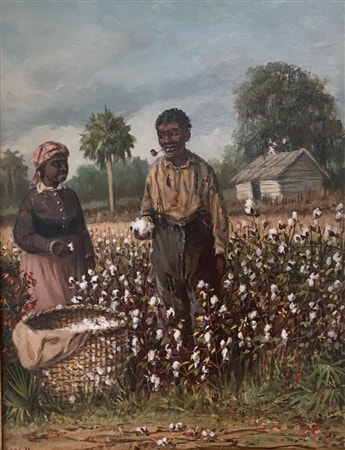Florida's Art Tradition
Statehood and a bit of culture
1845-1910
 Wm. A. Walker
Wm. A. Walker
1910 is an arbitrary date chosen to end a period within Florida's art tradition. It marks the end of Flagler's influence and the beginning of a segment of the tradition that has been little researched or reported.
Florida became a state in 1845. Although statehood and the winding down of the Seminole Wars undoubtedly made Florida a more desirable destination for travelers, which may have included artists, little is known about the art produced between the time Florida became a state and the Civil War. Even that great tragedy produced little in the way of Florida art. Perhaps it was because there were no decisive battles fought on Florida soil and the state was spared the ravages of war that others experienced.
Even though statehood was a reality, the Seminole had been subdued, and the Civil War was over, much of Florid was, nevertheless, a frontier. To quote from American Realism by Francois Mathey, "The new Americans (we can make that "Floridians") evidently had more immediate concerns then that of leaving to posterity an artistic memento of the promised land they had reached." Food and shelter ranked higher on the priority list of most Floridians then culture. Culture, though delayed, did find it's way to Florida.
After the Civil War men of vision like Henry Flagler and H.B. Plant invested heavily in this land of opportunity. Flagler, always the visionary, recognized the potential of what author Mathey has referred to as the "promised land" and set about to capitalize on Florida's future. He began a program of building hotels and railroads that did more for the development of Florida's east coast than anything before or since. Flagler was keenly aware of the fact that native Floridian's, the Crackers, were not likely customers for his railroads or hotels. He also realized that the folks who would ride his train and stay at his hotels were accustomed to a bit of culture. Consequently he encouraged artists, many with established reputations, to come to Florida under his patronage. Many did.
Paintings by these artists, most are in museums and private collections, constitute a priceless record of early Florida at the turn of the century. Similiarties in the art of the period gave birth to the term "St. Augustine School of Art". Paintings from the period make up a body of work recognized as being historically, the finest art produced in Florida. 1910..., the end of Flagler's influence.
Authors note.
Writers more scholarly than I are often loathe to use terms like "St. Augustine School" or "Indian River School" because they recognize no discernible interaction between the artists that would normally constitute a "school". I use the term to indiciate a chronological similarity or to categorize the art as being influenced by a specific individual or group within a time frame.
Jim Fitch
<Chapter 2 - ART OF THE COLONIAL AND TERRITORIAL PERIOD |
